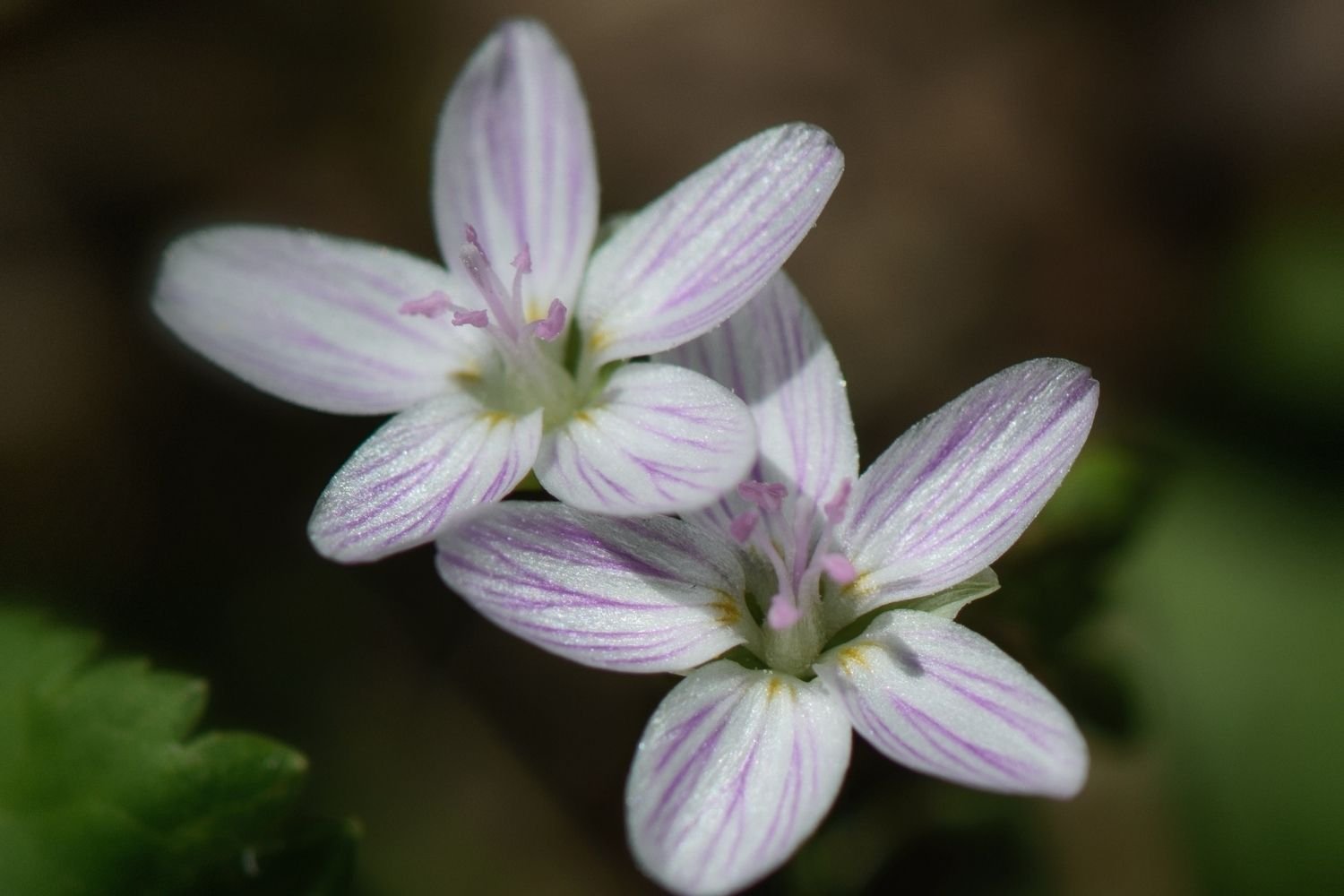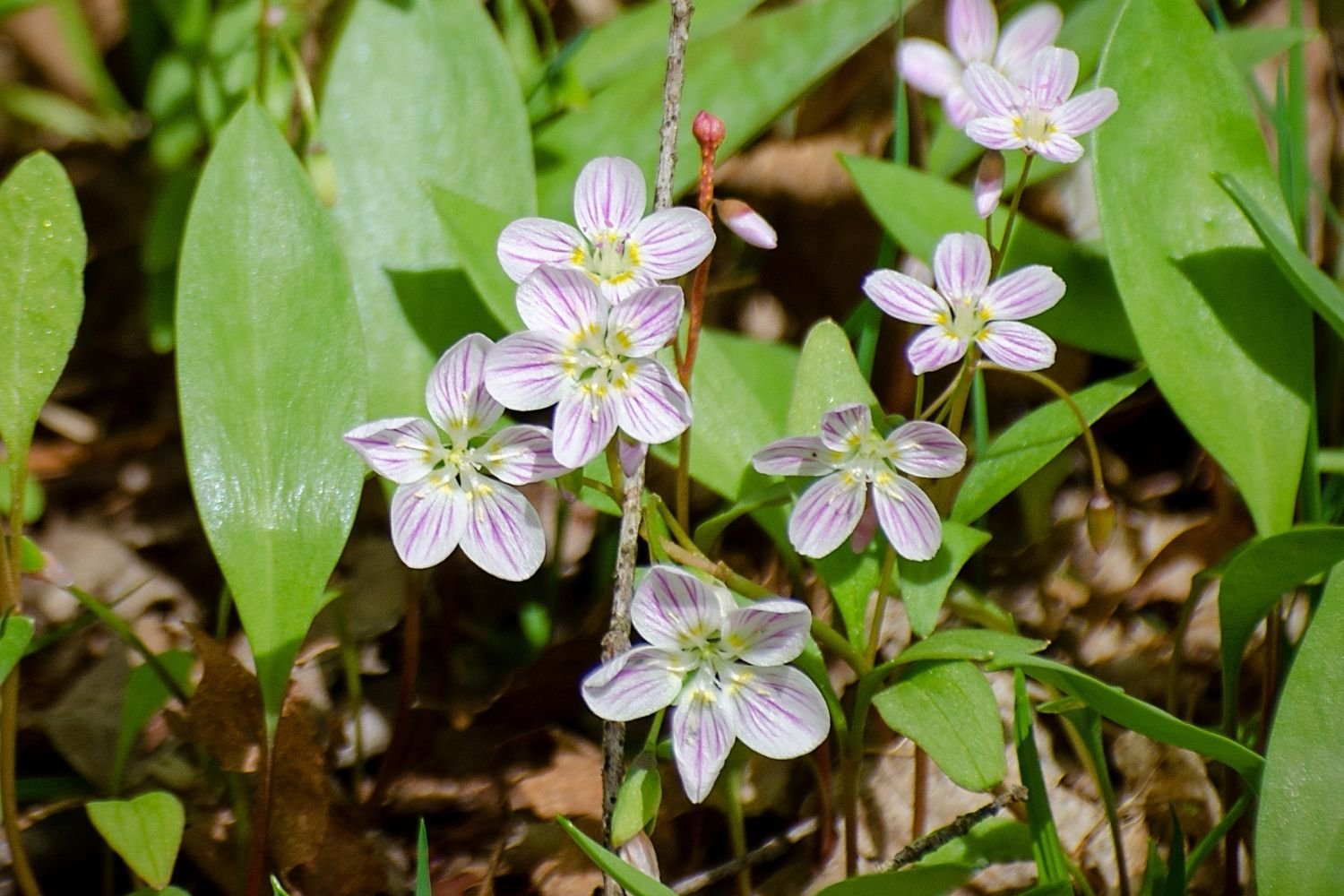Plant Profile – Claytonia virginica
A sweet, native, spring ephemeral…
Claytonia virginica (also known as “Spring Beauty”) is a spring ephemeral and one of our earliest blooming native woodland wildflowers. It emerges in very early spring to take advantage of the sunlight before deciduous trees leaf out and then goes dormant as the shade from overhead trees intensifies and the heat of summer begins.
Claytonia is about 6-10 inches tall with groups of light pink or white flowers with dark pink stripes. The flowers open on sunny days and close at night and on cloudy days. The pollen is also pink.
It has pink pollen!
This plant is very important to native insects - especially since resources are so limited in early spring. The flowers create a large amount of nectar. So much so, that there is some speculation other native spring plants pattern their flower shape and size off of Claytonia to fool insects into visiting. There is even a specialist native bee (Andrena erigeniae) that lives off only pollen from Claytonia species and can be observed with pink pollen pants in spring.
The early leaves are grass-like and can be mistaken for a grassy weed in very early spring – so be careful not to weed it out. The plant spreads by underground tubers which are edible and said to have a flavor like sweet potatoes or chestnuts. This has earned this plant a second common name – “Fairy Spud”.
Claytonia can also gently seed. The seeds are forcibly ejected from the capsule when they are mature in late spring/early summer. The seeds also contain elaiosomes, a fatty coating that is attractive to ants. The ants help disperse the seeds by consuming the fatty coating and then depositing the seeds on their waste piles.
Claytonia prefers partial shade in moist rich humusy soils with good drainage. It thrives in deciduous woodland conditions, but can be grown in garden conditions and even naturalized into lawns if mowed high and late.
While not often available in standard nurseries, Claytonia virginica can be purchased mail order as corms and is sometimes available at native plant nurseries. Seeds are also available, but be aware this plant has special seed stratification needs.
Give this sweet ephemeral wildflower a try, you won’t be sorry.



